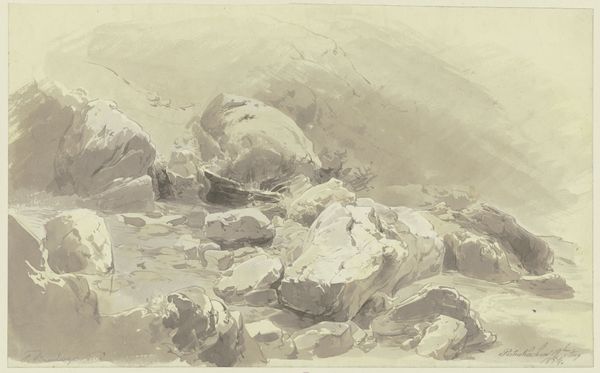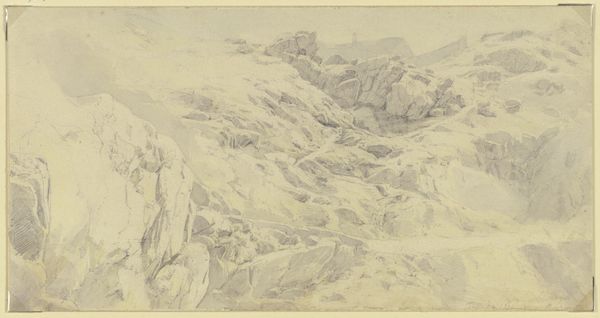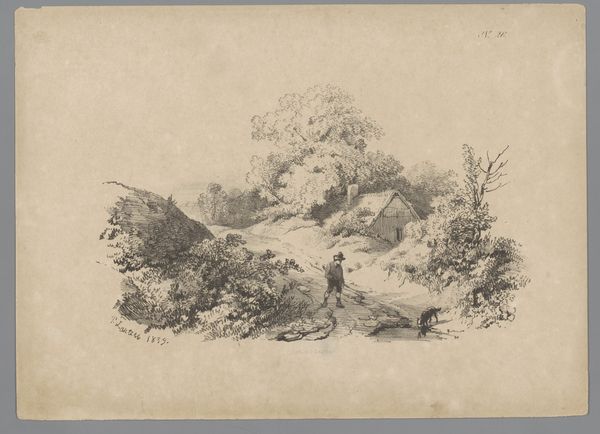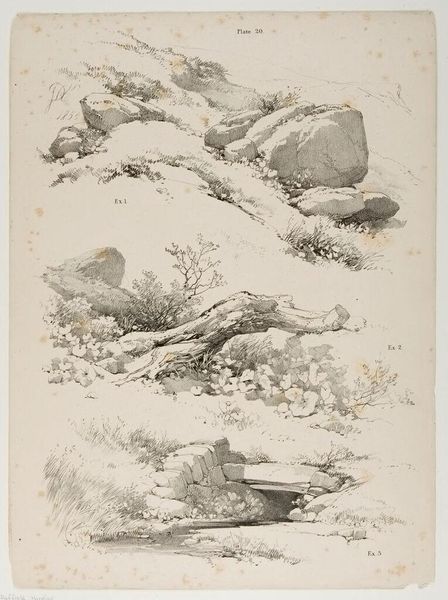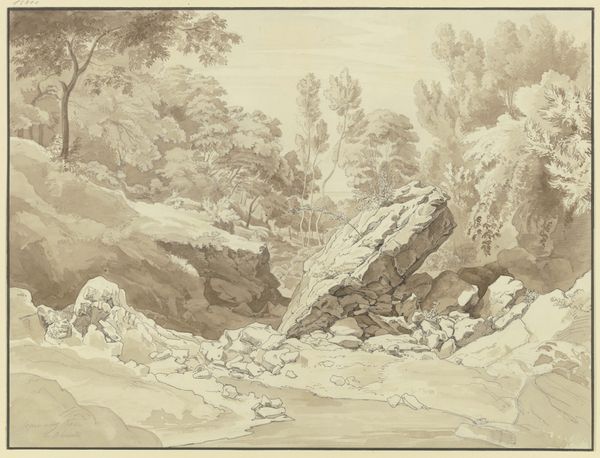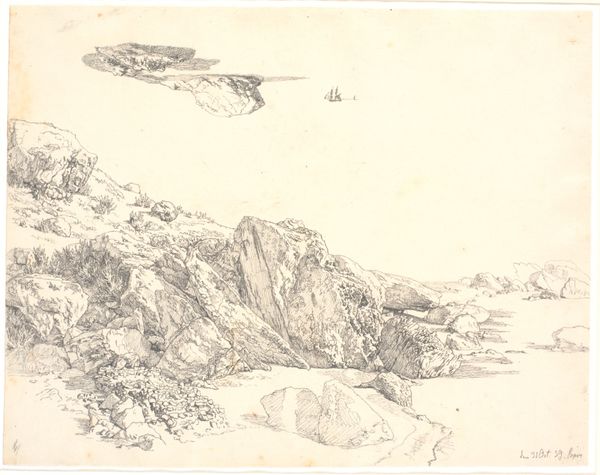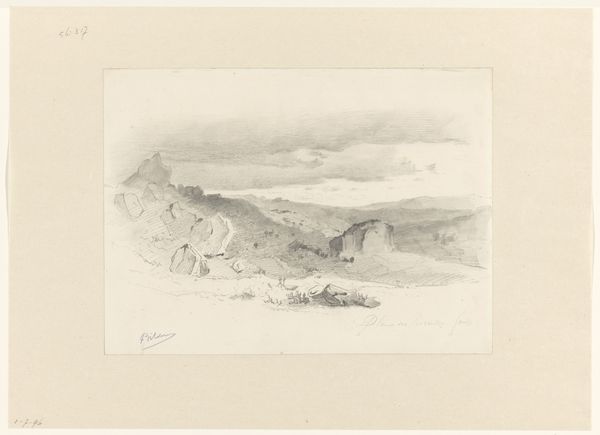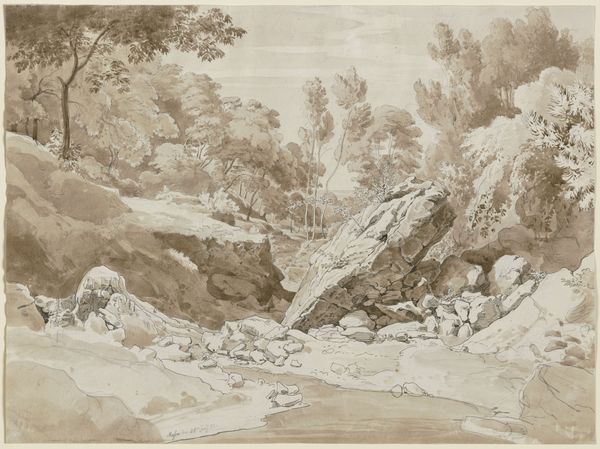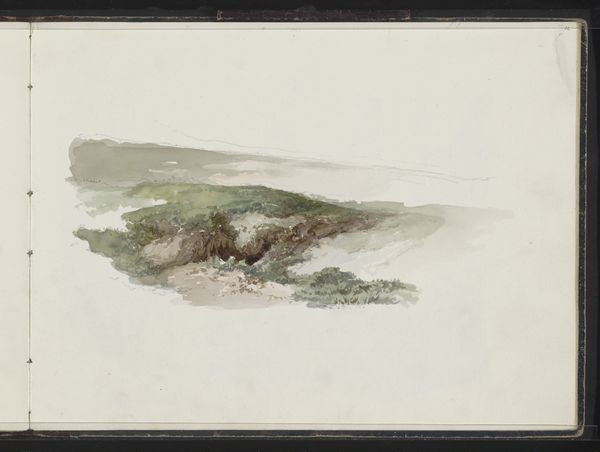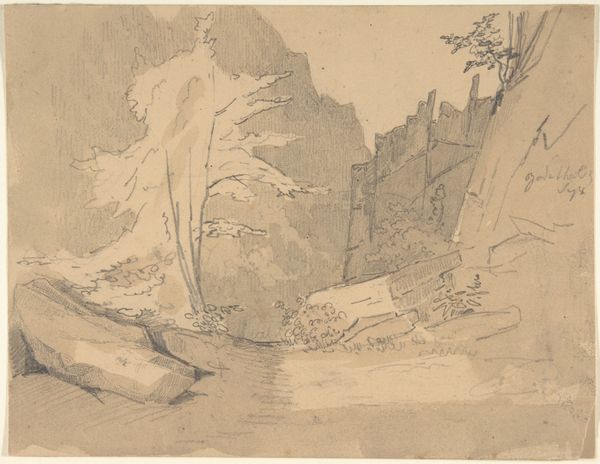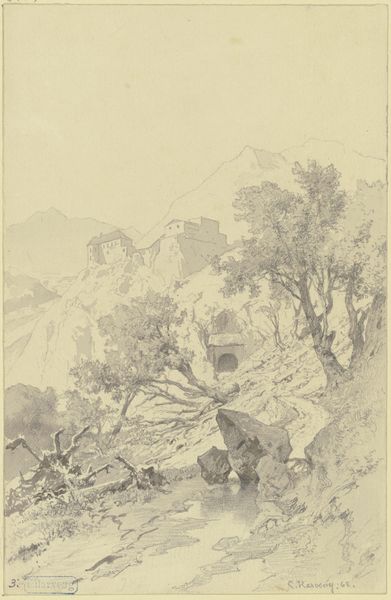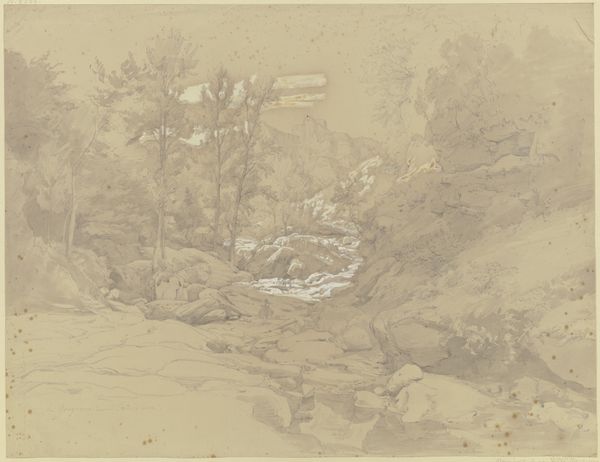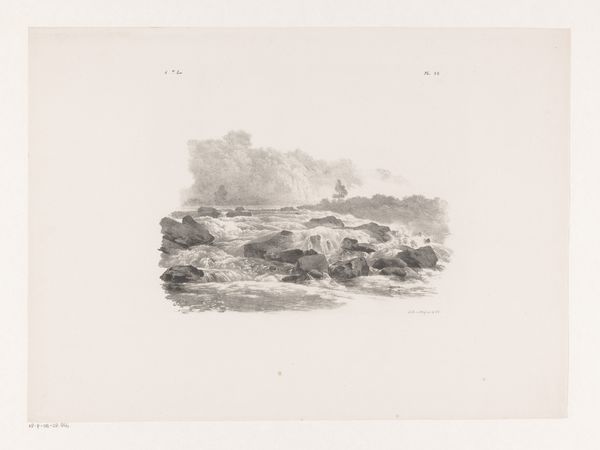
drawing, pencil
#
drawing
#
landscape
#
pencil
#
realism
Dimensions: sheet: 28.58 × 39.37 cm (11 1/4 × 15 1/2 in.)
Copyright: National Gallery of Art: CC0 1.0
Editor: This is "Hintersee, Germany," a pencil drawing by John Singer Sargent from 1871. It's so delicate and precise. The rendering of the rocks and trees almost feels photographic despite being a sketch. What do you see in this piece in terms of its cultural or historical context? Curator: This drawing provides a glimpse into the artistic training and visual culture of the late 19th century. Sargent, though American, received much of his early education in Europe. These types of academic studies of nature were critical for young artists, right? How do you think these studies functioned within art education? Editor: I imagine they were foundational, teaching artists how to observe and translate the natural world. Curator: Precisely. But it was also about establishing an artistic lineage. Think of the tradition of landscape painting— artists like Constable, Corot—all seeking a "truth" in nature. Sargent is participating in and also subtly transforming that tradition. How do you see his hand in pushing that landscape tradition forward in a new direction? Editor: Well, it’s a study, not a finished painting. I can see it both referencing those earlier artists but remaining… modern by its fragmented character. Curator: A keen observation. It’s as much about the act of seeing and recording as it is about a grand, romantic vision of nature. Think of how photography was influencing art at the time, documenting the world in new ways. It shifts art away from the picturesque, romantic ideal and closer to reality, one fragment at a time. Any surprises from our discussion of "Hintersee, Germany?" Editor: Definitely the connection to photography—I hadn't considered that! Seeing this piece as part of a larger historical narrative really opens it up. Curator: Indeed, looking beyond the surface always does.
Comments
No comments
Be the first to comment and join the conversation on the ultimate creative platform.
